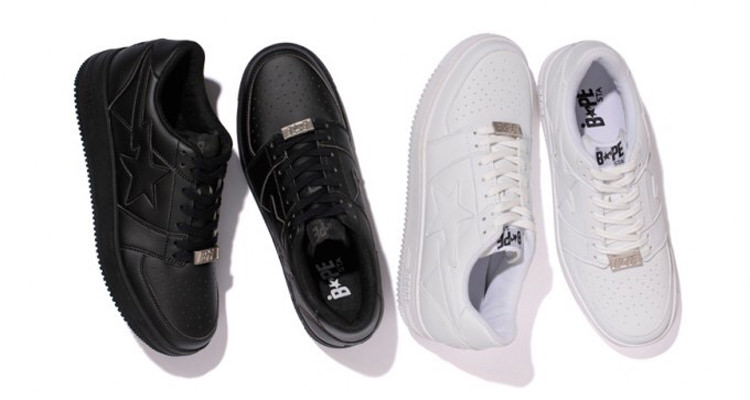This post may contain affiliate links. Please read our disclosure policy.
| Waiting for a major sneaker release is not easy. Often, several months separate the first look and the actual release of a sneaker. In between time, a plethora of detailed photos surface in attempt to hold us over until the release.
However, a few pairs (one way or the other) hit the web early possessing a price more than double the retail tag. All in all, having the shoes early would be great, but the price is just a little too much out of reach of justification. Along comes offers to “pre-order” and reserve your pair. Priced slightly higher than the box price, this option sounds like a great way to ensure you get these great kicks and take away the need to camp out only to potentially be shut out on a cold winter morning. There has been a recent phenomenon of the practice of pre-orders in the sneaker community and while the process might sound simple and convenient, consumers should still exercise precautions. ?In this article Nice Kicks explores the business of pre-ordering sneakers – the advantages, the disadvantages, and the dangers. |
Reselling sneakers has long been a practice in the community though it still remains something quite controversial. Purchasing a pair for personal use is worth the campout for many, but grabbing a second, or third pair can help one offset the cost of their time and hassle of getting up early to wait in the cold for a few hours. The afternoon of a highly anticipated release will bring many pairs to eBay of sellers looking for a quick flip. For years the process was almost a guaranteed win as quantities were relatively limited and demand was strong, but as companies started increasing quantities and frequency of releases, reselling wasn’t a guaranteed money maker like before.
While some quit the practice all together on general release goods, others drafted other plans. In business, the old saying goes “buy low, then sell high”, but what if the formula was reversed and the process was flipped to “sell high, then buy low.” Welcome to the concept of pre-orders. Since the sellers take on less risk of getting stuck with a pair they can’t move or the risk of buyers not paying a good price for the shoes on the after market, a lower price is demanded for payment up front.
Buyers can sleep in, stay in their warm houses, and count on receiving their shoes the following week with ease. But, what if everything doesn’t go according to plan?
We caught up with a reader of the site, Mike Ruiz, who experienced just this. “The problem came with the Eggplant Foamposites. Usually I got my tracking number on the release date or the Monday, but I didn’t hear a word from the seller. I knew the site was legit, but I had to send an email 5 days after the release to ask what was up. The seller took too many orders and told me that he should be able to get my pairs if he had a couple more days to call other stores. Another week went by and the best he could offer me was my money back. This wasn’t much help since the shoes were selling on eBay for $275 in my size – out of my price range. I didn’t want my money, I wanted my sneakers. I was told if I paid in advance my pairs were reserved. I guess the seller was just on the hunt like everyone else.”
Thankfully for Mike, his money was returned to him, but this hasn’t always been the case. “I knew the demand was going to be stupid for the Jordan 11/12 CDP,” said Jason Miles, “so I paid $420 for a pre-order in October way ahead of the release date just to make sure I got my shoes. The release date came and I started sending emails every day after the release asking for a tracking number. I never heard a word. Finally I contacted Paypal, but since it had been almost 3 months, I wasn’t protected as a buyer. My Christmas present was getting scammed.”
These two stories were not the norm when we asked readers to submit their stories of pre-ordering. Most were thrilled of the process of not having to camp out or risk waiting all the time in line to not get their shoes by the time it was their turn to purchase.
“We usually get the pre-order items 2 weeks before the available date we have listed on our website,” states Ron from the website ShoeTrends.com, a website that offers pre-orders, “…If buyers pre-order the shoe they are guaranteed their pair.”
From our research we came across pre-orders being offered on eBay and was able to get in touch with one of the sellers. “The key is knowing how many of what shoes and what size,” states the seller who wished not to be identified, “I only offer for sale the exact quantities once I receive my shipping confirmation from my vendor.”
As with any buying decision, some precautionary steps and pre-purchase research can go a long way to making your pre-order experience a success. Below we have assembled a quick list of 7 steps you should take before you decide to pre-order your next pair.
7 Things to look out for when Pre-Ordering
1. Read Reviews. Take a quick look at sneaker forums such as NikeTalk and look for user experiences. Don’t be afraid to post questions in the appropriate part of the forum for a legit check. If all else fails, Google is your friend.
2. Don’t be afraid to ask. Ask the seller what processes they take to ensure that they will be able to obtain the shoes for you. Asking a seller for names and connects will most likely not receive a response, but it is well within your rights to ask what steps they take to secure your pair. It doesn’t hurt to ask about the “what if’s” as well. It is important to know how the seller will handle the situation in the event that they are unable to obtain your shoes.
3. Read seller’s policies. Take the couple minutes to read through the seller’s store policy. Make sure you are comfortable with the terms and conditions of the site.
4. Protect yourself. Use a credit card or Paypal to make your pre-order. Both of these payment methods do provide buyer protection.
5. Don’t pre-order too early. Before you place your pre-order, find out how many days you have after the purchase to file a dispute from your credit card issuer. The “period of protection” varies from as short as 30 days to 180 days. It is strongly advised only to make a pre-order within this period in the event that you do not receive your merchandise.
6. Can you contact? Make sure that the site or person taking the pre-orders has reasonable avenues of contact. Does the seller have an email address? Phone number? It is always to know this before you pre-order.
7. Copies of contact. Save all emails and communication between yourself and the seller. Hopefully you will never need to use these, but it is always advised to keep copies.



